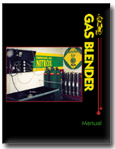|
|
Technical (tec) diving means
going beyond recreational scuba diving limits. But, tec divers will tell you
that itís really about the challenge and adventure of exploring places that
no one else has ever seen. Tec diving is not for everyone, but it does
attract experienced divers who want to go beyond their current limits and
are willing to accept the added risks, training, investment and commitment
it demands. If this is you, then PADI TecRec courses are your ticket to
extreme adventure. |
|
What is technical diving? |
|
Technical scuba diving involves going beyond
recreational scuba diving limits and includes one or more of the following: |
-
Diving beyond 40 metres/130 feet
-
Required stage decompression
-
Diving in an overhead environment beyond 40 linear metres/130 linear
feet of the surface
-
Accelerated decompression and/or the use of variable gas mixtures during
the dive
-
Use of extensive equipment and technologies
|
|
In technical diving the surface is often
inaccessible in an emergency, so tec divers use extensive procedures,
equipment and training to manage the added risks and potential hazards.
Although founded on extensive open-circuit scuba technology, tec diving has
been revolutionized by the development, availability and reliability of
closed circuit rebreathers (CCRs). CCRs have numerous benefits and provide
tec divers with significantly more time underwater. |
|
|
 Gas Blending
Gas Blending
 |
 DSAT Nitrox Gas Blender
DSAT Nitrox Gas Blender |
 |
|
|
The DSAT Nitrox Gas
Blender course is intended to train divers in the proper procedures,
equipment requirements, and hazards involved in blending Enriched
Air Nitrox. DSAT is a PADI corporate affiliate which offers a
variety of technical diving courses. |
|
 |
|
|
 Technical Diving Courses
Technical Diving Courses
 |
 PADI
Tec 40 PADI
Tec 40 |
 |
|
|
The PADI Tec 40 course is where you
transition from recreational scuba diving to technical diving. Itís
a great place to start because itís the first subdivision of the
full PADI Tec Diver course and bridges the gap between no stop
diving and full technical deep decompression diving. You gain
experience and begin building the knowledge and skills you need to
continue your tec diver training. You will qualify to make limited
decompression dives to 40 metres/130 feet. |
|
 PADI
Tec 45 PADI
Tec 45 |
 |
|
|
The PADI Tec 45 course
is the second part of the full PADI Tec Deep Diver program. Youíll
extend your depth limit to 45 metres/145 feet and learn to plan and
execute repetitive decompression dives using a single
stage/decompression cylinder. It puts you in a complete tec diving
rig, which can be either backmount or sidemount. Youíll also make
accelerated decompression dives using EANx or pure oxygen. This is a
course where youíll rise to the challenge and make the commitment to
become a technical diver. |
|
|
|
 PADI
Tec 50 PADI
Tec 50 |
 |
|
|
The third part of the full PADI Tec Deep
Diver program is Tec 50. As a Tec 50 diver, you show that youíve
developed competency as a tec diver and have the skills to dive to a
maximum of 50 metres/165 feet. You know how to make extended,
accelerated decompression stops using up to two gases. Itís not easy
to reach this level and earning your Tec 50 certification opens the
door to deeper diving expeditions. |
|
 PADI
Tec Sidemount PADI
Tec Sidemount |
 |
|
|
If youíve looked into
technical diving, you realize that tec divers always wear more than
one tank. Sidemount is an increasingly popular way to configure
multiple cylinders for technical diving. You can enter the world of
tec diving with the Tec Sidemount Diver course and apply what you
learn to other TecRec courses. Your instructor may offer to
integrate this course with the Tec 40, Tec 45 or Tec 50 courses. |
|
|
|
Looking to push your diving education even
farther? Check out: |
 |
|
|
|
|


